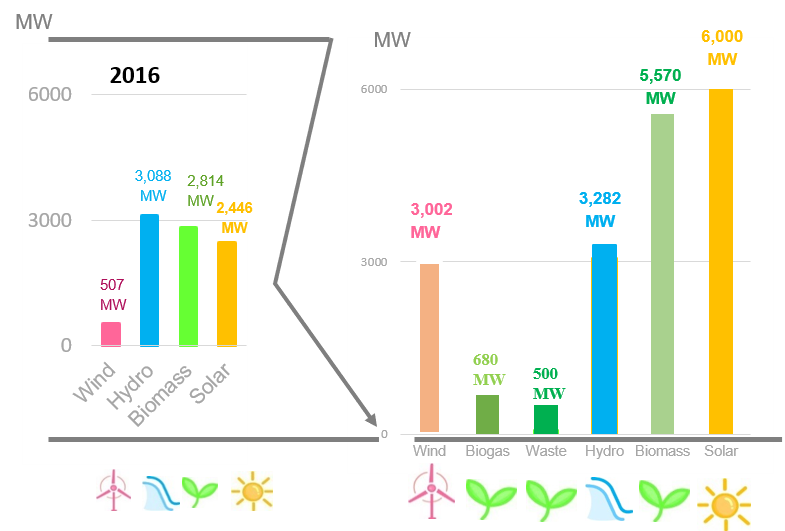The AEDP 2015-2036 is an important roadmap for Thailand’s Renewable Energy (RE) development. The overall RE target to be achieved is a 30% share in final energy consumption by 2036; including electricity, heat and fuel consumption. For electricity, the target is to have 20% of final energy consumption from RE, which is supposed to be equal to the total RE installed capacity of 19,684.4 MW (including hydro power). Thailand formulated these targets by addressing two types of power production, namely: 18% from Very Small Power Producer (VSPP) and 2% from domestic large hydro power plants. While the roadmap also sets the target of the provincial RE development by zoning of electricity demand and RE potential, it is also one way of Thai government to encourage on promoting power generation from Municipal Solid Waste (MSW), biomass and biogas to benefit both farmer and communities.
The target for electricity generation compared to the existing installed capacity in 2014 is defined in term of capacity [MW] and can be seen in Figure 4 below.
RE Target in the power sector
 Source: AEDP 2015-2036 (target) and DEDE website (2016)
Source: AEDP 2015-2036 (target) and DEDE website (2016)
Note: In order to represent the data clearly, the scale of ocean energy and geothermal are different from the rest
 Source: Presentation of Mr. Achawangkul in RE-SSN meeting 2017
Source: Presentation of Mr. Achawangkul in RE-SSN meeting 2017